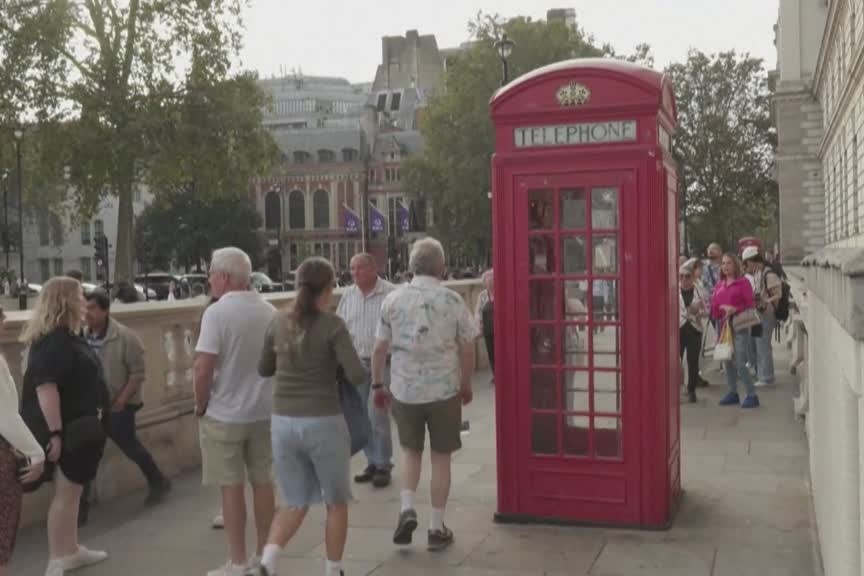(King’s Lynn) In his workshop full of period memorabilia, brimming with rusty petrol pumps and enameled plaques, Carl Burge is putting the finishing touches to an iconic British red telephone box currently being restored.
For more than 20 years, this 54-year-old man has given a new lease of life to these “legendary” but aging cabins, damaged by the humid English climate.
“If you send a postcard anywhere in the world with only a photo of a red telephone box, 95% of people will tell you: it’s in England,” he told AFP.
Since their appearance in the 1920s, these red booths have become one of the main symbols of London and the entire United Kingdom, but most have disappeared from the landscape since the advent of mobile phones.
There are only 20,000 public telephones in working order (compared to around 100,000 in the 1990s), including 3,000 traditional red booths, according to the historic operator BT.
Some 7,200 others, who were out of service, were recovered by communities, associations or churches. Some were recovered by local authorities and transformed into mini-libraries, information kiosks for tourists or even defibrillators.
Some disused cabins can also be rented by small businesses, such as tiramisu shop “Walkmisu” in central London.
On the edge of Russell Square, Daniele Benedettini has set up inside two red telephone booths to sell the famous Italian dessert.
“I think it was really cool to be able to mix English tradition with Italian tradition,” he explains to AFP.
Opening a shop in an old cabin, rented from a private owner, also costs less than a traditional shop, explains the 29-year-old, who started with Walkmisu before opening a café nearby.
Its two telephone booths have been renovated and equipped with shelves, a refrigerator and a coffee machine, while retaining their iconic exterior appearance.
According to Carl Burge, restoring a telephone box takes an average of six weeks, and begins with a “careful” dismantling down to the bone.
“You never know what you’re going to find under the paint. You can just as easily discover a true gem as a dinosaur” tired by the years, he describes.
Detailed work
This Briton has seen many red cabins pass through his workshop in King’s Lynn, in the east of England, often broken, with missing glass in the windows or rotten wooden doors.
Once the cast iron frame is free of all its components, it is sandblasted to remove paint, rust and any other impurities.
The next step is to apply resin and sand away imperfections, a laborious process that is done by hand and can take several days.
Finally, the telephone booth is spray painted with the famous “Post Office Red”, laminated glass is installed in the windows and the door has a new exterior wooden frame.
Carl Burge, who started out in motoring, turned his passion for British collectibles into a full-time restoration business, known as ‘Remember When UK’.
Initially, he came across a telephone booth that was part of a property for sale. He bought it and restored it, before displaying it in his garden.
He ended up selling it himself, which he regretted when he realized that he “missed” his cabin.
Having become a professional restorer, Carl Burge now works on several cabins at the same time.
Among them is a copy of the famous K2, the first model of red telephone box introduced in 1926 and designed by British architect Giles Gilbert Scott, known for his work on other public buildings in London.
Twenty years later, Carl Burge has lost none of his passion. “I’m getting a little older, everything seems to be getting a little heavier. But I think my enthusiasm is the same,” he said. “In fact, it may even be bigger.”
